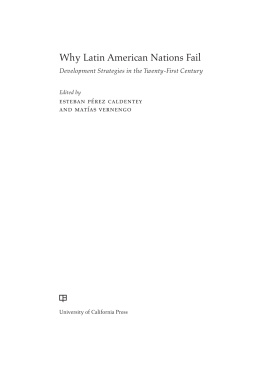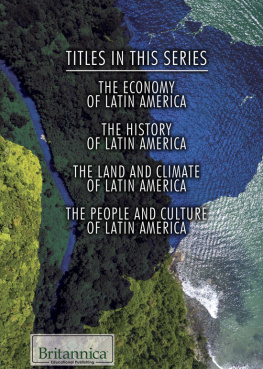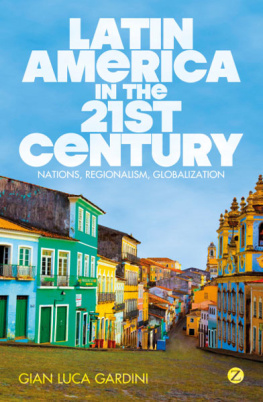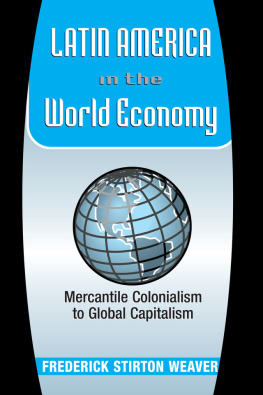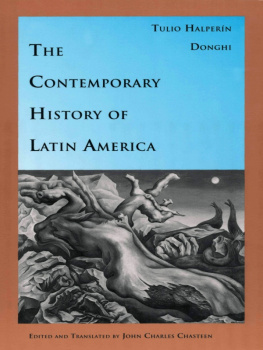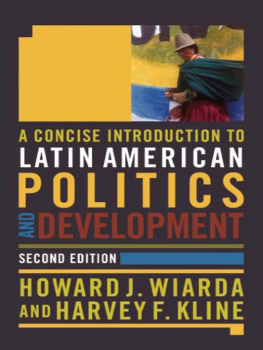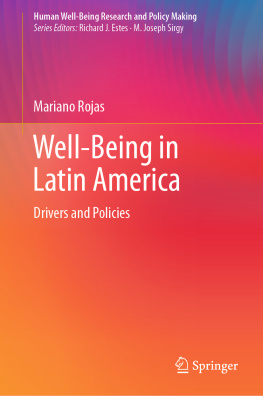The chapters in this book were presented at the Eastern Economic Association Meeting in New York between February 27 and March 1, 2015. The objective was to provide a multidisciplinary view of the institutional turn in development and economics and how it does or does not illuminate the limitations of the current development strategy in Latin America. Our preoccupation is to go beyond the proximate or more superficial causes of underdevelopment in the region and, hence, discuss the endless failures of alternative development strategies to promote catching up with advanced economies.
Contributors
M ARTN A BELES Economic Commission for Latin America and the Caribbean, Buenos Aires, Argentina
M IGUEL A. C ENTENO Princeton University, Princeton, NJ, USA
A GUSTN E. F ERRARO Universidad de Salamanca, Salamanca, Spain
K EVIN P. G ALLAGHER University of Boston, Boston, MA, USA
S TEFANIE G ARRY Economic Commission for Latin America and the Caribbean, Mexico City, Mexico
C ARLOS A GUIAR DE M EDEIROS Universidade Federal do Rio de Janeiro, Rio de Janeiro, Brazil
J UAN C ARLOS M ORENO -B RID Universidad Nacional Autnoma de Mxico, Mexico City, Mexico
J EAN C. N AVA Princeton University, Princeton, NJ, USA
J OS A NTONIO O CAMPO Columbia University, New York, NY, USA
E STEBAN P REZ C ALDENTEY Economic Commission for Latin America and the Caribbean, Santiago, Chile
A LEJANDRO P ORTES University of Miami, Coral Gables, FL, and Princeton University, Princeton, NJ, USA
R EBECCA R AY University of Boston, Boston, MA, USA
S EBASTIN V ALDECANTOS Universidad Nacional de Mar del Plata, Mar del Plata, Argentina
M ATAS V ERNENGO Bucknell University, Lewisburg, PA, USA
1.
Introduction
Matas Vernengo and Esteban Prez Caldentey
INSTITUTIONS AND THE LIMITS OF THE CURRENT DEVELOPMENT STRATEGY
There are many explanations for why some nations grow to be rich while others are poor. And there are different views on why the great majority of economies, including the Latin American ones, remain stuck in between both poles without being able to compete with poorer economies or catch up to the rich ones. The traditional mainstream explanation for the differences in economic development and growth across nations has relied on the neoclassical production function. The production function permits the decomposition of the rate of growth of an economy into the respective rates of growth of factor inputs (i.e., labor and capital) and a residual, total factor productivity, which represents the different forms of technological change.
Since growing by accumulating successive units of capital and labor is confronted with diminishing returns, a sustainable growth path can only be achieved through innovation and technological progress. This placed the focus of the analysis of growthand of catch-up between countrieson technology, even when considering increasing returns to scale in capital and labor. However, besides insurmountable inconsistencies characterizing the specification of a production function (such as the fact that capital cannot be measured independently of prices and distribution, as pointed out in the Cambridge capital controversies), a large part of growth rates and differences in growth rates among nations cannot be explained by either factor accumulation, innovation, research and development, or technological progress (Helpman, 2004). This key failure of mainstream growth theory opened the route to consider alternative explanatory variables and, in particular, sociopolitical factors including geography, culture, and institutions.
Jared Diamond, author of the best seller Guns, Germs, and Steel, is correct to point out that, in part, technology is geographically determined; for him, geography plays a central role. Culture has fewer defenders; most prominently among modern economists is probably McCloskey (2010). But the obstacles to that argument are even more difficult to overcome, not the least because in modern times, countries with diverse cultures have become developed, like Japan and South Korea (Acemoglu and Robinson, 2012). The Weberian Protestant work ethic would not help, in this case, to explain relative development. It is important to note that culture does matter, even if it is not determinant, since different cultures produce different types of capitalism, some more benign than others (Hall and Soskice, 2001).
The explanations of growth differences based on cultural and geographic patterns lack the generality and universality required by neoclassical theory to argue that societies placed in different contexts and historical periods respond, at the general level, to one and the same principle: utility maximization. This limitation has significantly contributed to consolidating the institutional factor as the most promising mainstream line of research to explain the central divide between the levels of development across different nations and historical periods.
According to this line of research, institutions are generally defined as the informal norms and formal laws of societies that constrain and shape decision making (Alston, 2008, 2). Informal norms are standard rules of behavior that are unwritten but understood within a group or a community; more specifically, the term refers to sanctions, taboos, customs, traditions, and codes of conduct. By contrast, formal rules are consciously designed by humans and often codified in written formexamples are constitutions, laws and regulations as well as property rights (North, 1990, 97).

